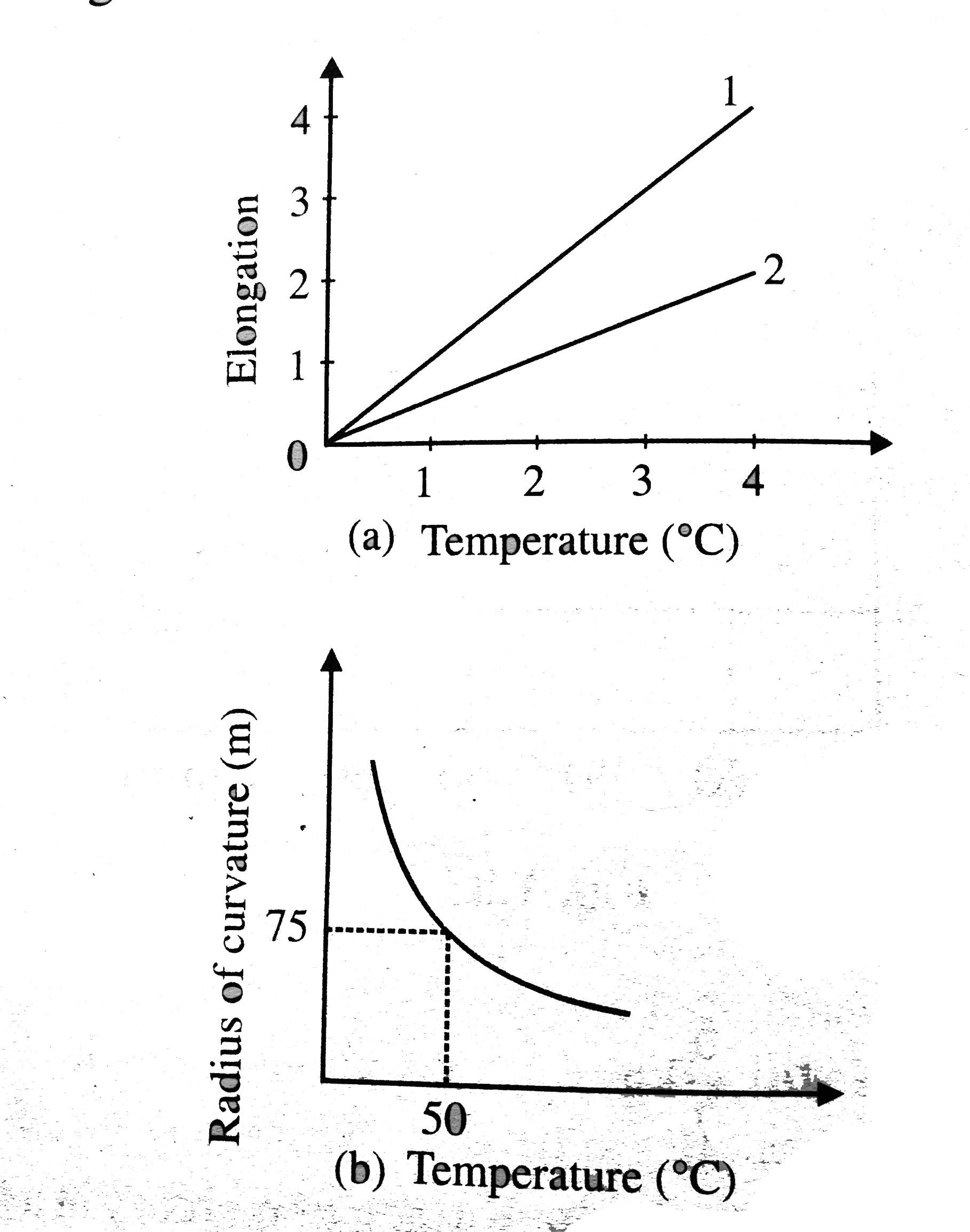When a brass-invar bimetallic strip is heated, unequal expansion bends the strip, such that brass takes
inner edge
outer edge
either (a) or (b)
none of these
To solve the question regarding the behavior of a brass-invar bimetallic strip when heated, we can follow these steps:
1. Understanding Bimetallic Strips: A bimetallic strip consists of two different metals bonded together. In this case, we have brass and invar. Brass has a higher coefficient of thermal expansion compared to invar.
2. Heating the Strip: When the bimetallic strip is heated, both metals will expand, but they will not expand equally due to their different coefficients of thermal expansion.
3. Expansion of Brass and Invar: Since brass expands more than invar when heated, the side of the strip that is made of brass will elongate more than the side made of invar.
4. Bending of the Strip: As a result of the unequal expansion, the strip will bend. The brass, which expands more, will push outward, while the invar, which expands less, will remain closer to its original length.
5. Determining the Inner and Outer Edges: In this bending process, the side that expands more (brass) will end up on the outer edge of the curve, while the side that expands less (invar) will be on the inner edge. Therefore, the brass will take the outer edge.
6. Conclusion: The correct answer to the question is that when heated, the brass takes the outer edge of the bimetallic strip.
Final Answer:
The brass takes the outer edge when the brass-invar bimetallic strip is heated.
---
The brass takes the outer edge when the brass-invar bimetallic strip is heated.
Topper's Solved these Questions
- HEAT TRANSFER BOOK - ICSECHAPTER - HEAT TRANSFER EXERCISE - THEME ASSIGNMENT
11 Videos
- HEAT TRANSFER BOOK - ICSECHAPTER - HEAT TRANSFER EXERCISE - Questions (Name the following)
5 Videos
- HEAT TRANSFER BOOK - ICSECHAPTER - HEAT TRANSFER EXERCISE - THEME ASSIGNMENT (true or false)
3 Videos
- FORCE AND PRESSURE BOOK - ICSECHAPTER - FORCE AND PRESSURE EXERCISE - Picture Study
4 Videos
- LIGHT ENERGYBOOK - ICSECHAPTER - LIGHT ENERGYEXERCISE - THEME ASSIGNMENT D. Statements given below are incorrect. Write the correct statements.
7 Videos
Similar Questions
A bimetallic strip is used in:
View SolutionIf a bimetallic strip is heated it will
View SolutionIf a bimetallic strip is heated it will
View SolutionWhat is a bimetallic strip?
View SolutionWhere is bimetallic strip used?
View SolutionWhat is a bimetallic strip made of?
View SolutionHow is bimetallic strip used in fire alarm?
View SolutionWe use bimetallic strips as thermostat switch.
View Solution
Figure. Shows the graphs of elongation versus temperature for two different metals. If these metals are employed to form a straight bimetallic strip of thickness 6 cm and heated, it bends in the form of an arc, the radius of cuvature chaging with temperature approximately as shown in the figure. The linear expansivities of the two metals are
View SolutionA bimetallic strip of brass and iron is straight at room temperature. When this bimetallic strip is heated it bends, such that:
View Solution
